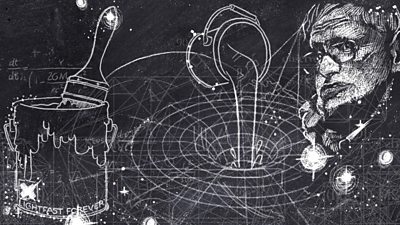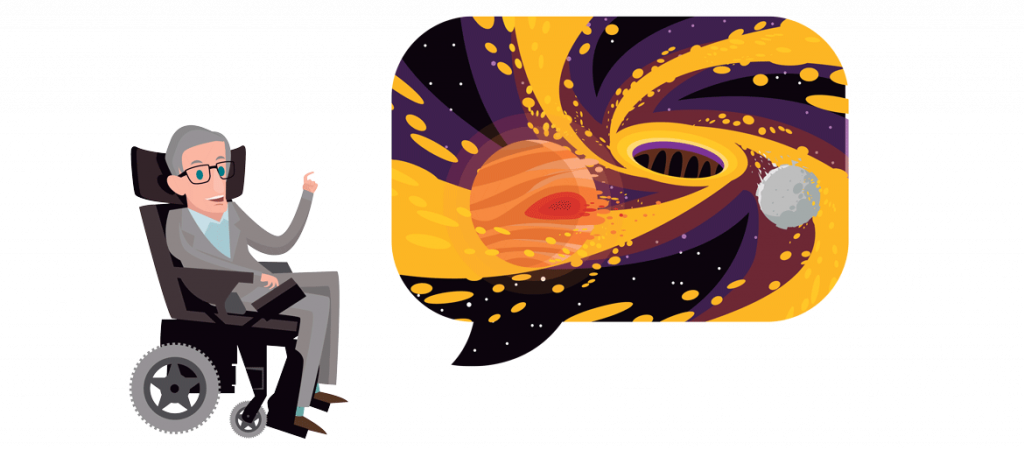Dr. Hawking needs no introduction. He was the last physicist whose unique profile crossed the barriers of science to become, like Einstein, an icon of popular culture. His image has been linked to the field that captured the bulk of his work, black holes. Stephen Hawking’s discoveries shed light on the darkness of these mysterious astronomical objects; but at the same time opened up questions that will continue to plague scientists for decades to come. But today we are interested in answering a question that has nothing to do with his theoretical work: How Did Stephen Hawking Talk?
British scientist Stephen Hawking suffered from amyotrophic lateral sclerosis (ALS). The disease prostrated him in a wheelchair and reduced his motor skills until a tracheotomy stole his voice, which he recovered, in the form of software, which he himself designed to be able to express himself and continue giving classes, conferences, and television spots. Stephen Hawking is without a doubt a representative of the world’s best-known ALS patient community. His struggle to continue to communicate and work is a testament to how technology can change people’s lives for the better. In this case, the technology of voice synthesis; which we often use for tasks without too much importance in our lives, is really a tool for the inclusion of those people who have some visual or speech impairment.
What Is Speech Synthesis? How Did Stephen Hawking Talk?
Speech synthesis is the process by which a machine creates or simulates human speech from text. This process is done using mathematical methods and the study of phonetics and linguistic theory. In other words, it is the artificial production of voice expressions by a machine.
This technology is especially beneficial for people who multitask, have eyestrain, or simply want to improve their reading. However, there is one feature of this type of software that is even more important: inclusion. Our culture communicates primarily through sight and speech, and the truth is that many people are systematically excluded as a result. Text-to-speech tools, in this sense, are much more important than comfort or efficiency.
The story of Stephen Hawking demonstrates the importance of this type of technology for individuals and societies. Because communication, feeling valuable, and being able to work are all important for our mental and physical health, TTS technology enabled this renowned scientist to improve his quality of life.
Woord: A Great Text To Speech Option
As we have already said, anyone can benefit from TTS software as they are extremely versatile. However, here we suggest that you begin to see it as a tool to work with others. If you are a teacher, this tool can be of great help for visually impaired students; or if you have a website for your business, providing audio options for your customers is a great option. Inclusion is everyone’s job! For this reason, we recommend Woord, an extremely intuitive TTS software with high-quality results.
Woord is a free online text-to-speech (TTS) program with a lot of excellent features. It offers more than 50 languages and dialects, as well as the ability to pick between masculine, feminine, or non-binary voices. All of these options are free to use, allowing you to evaluate the service before investing in the premium version. The free pack includes premium voices, a Chrome plugin, an SSML editor, an MP3 download, and up to 20,000 characters per month. You can also change the voice’s pace and format with this application.



